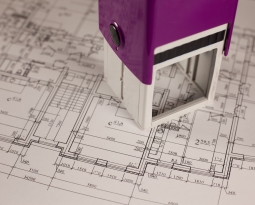Our in-house BREEAM Assessment team brings you five crucial tips about how to improve your BREEAM score.
The Building Research Establishment’s Environmental Assessment Methodology, more commonly known by the acronym BREEAM, is the world’s longest established method of assessing, rating and certifying the sustainability of buildings. Independent licensed assessors use scientifically-based sustainability metrics which cover a range of environmental issues to carry out the assessment.
BREEAM takes a holistic approach when assessing the lifecycle of a building. A BREEAM Assessment evaluates all the following categories: energy, health and wellbeing, water consumption, pollution, transport, materials, waste, ecology and management processes.
The BREEAM standard can be applied to virtually any building in any location, with versions for new buildings, existing buildings, refurbishment projects and large developments. These will be commercial buildings like offices or retail parks; public buildings such as courts or prisons; and multi-residential accommodation like university halls.
Now on to the good bits…
Get an early start
First, and most important, you must start thinking about a BREEAM Assessment at the very beginning of the design process. BREEAM consists of both a design and a post-construction assessment. The pre-assessment strategy allows you to identify key areas of your project’s environmental impact. It highlights time sensitive requirements which must be fulfilled during certain RIBA stages. It also determines the minimum standards that you need to meet to achieve your required BREEAM rating. In this way, the pre-assessment helps minimise cost and disruption by preventing the need to introduce design aspects retrospectively.
Do your research
Check your local planning requirements because they vary from LPA to LPA. Having said that, most planning applications require energy and sustainability statements. These ensure that you have considered all areas where you can conserve energy through the design and build process.
In some cases, a particular BREEAM rating will be a specified requirement. This is why you have to thoroughly check the specific requirements of your LPA. The main categories to consider are energy, water, pollution materials and the benefits of innovation.
That is not to say that the other categories are unimportant. All other aspects of the BREEAM Assessment need to be covered and are valuable. To maximise credits, you will need to include evidence of climate resilience and resource efficiency (think about the reuse and recycling of on-site materials).
Energy, energy, energy
Designing your building for an EPC rating of ‘A’ sets you on the right path to achieve your required BREEAM rating. Energy has the joint highest section weight at 15% and accounts for the largest section of credits, with a total of 31. From the word go, energy efficient measures, low-carbon and renewable technologies, and carbon offsetting need to be at the forefront of your design.
Understanding and commitment
It is vital that all members of the design team ‘buy into’ the BREEAM assessment process. A lack of understanding and/or commitment from just one design team member can potentially cause the project to run into difficulties. The same applies when appointing sub-contractors. Bottom line is – everyone needs to be familiar with and support the concept of BREEAM.
Choosing the right BREEAM assessor can help you overcome these difficulties. They provide expert help when preparing text for requirement/specification documents. In addition, your assessor can hold workshops with the design and construction teams in order to help them understand the BREEAM process and what is required of them.
Don’t assume, ask your assessor
It is fair to say that BREEAM and assumptions do not mix. Therefore, if a credit is confusing you, or, you are unsure what is required then the best advice is to ask your BREEAM assessor.
Remember: Your BREEAM assessor is there to help you.
If you are looking for a BREEAM Assessor on an upcoming project then get in touch for a chat on 01923 274 427 or email us at info@abbey-consultants.co.uk








